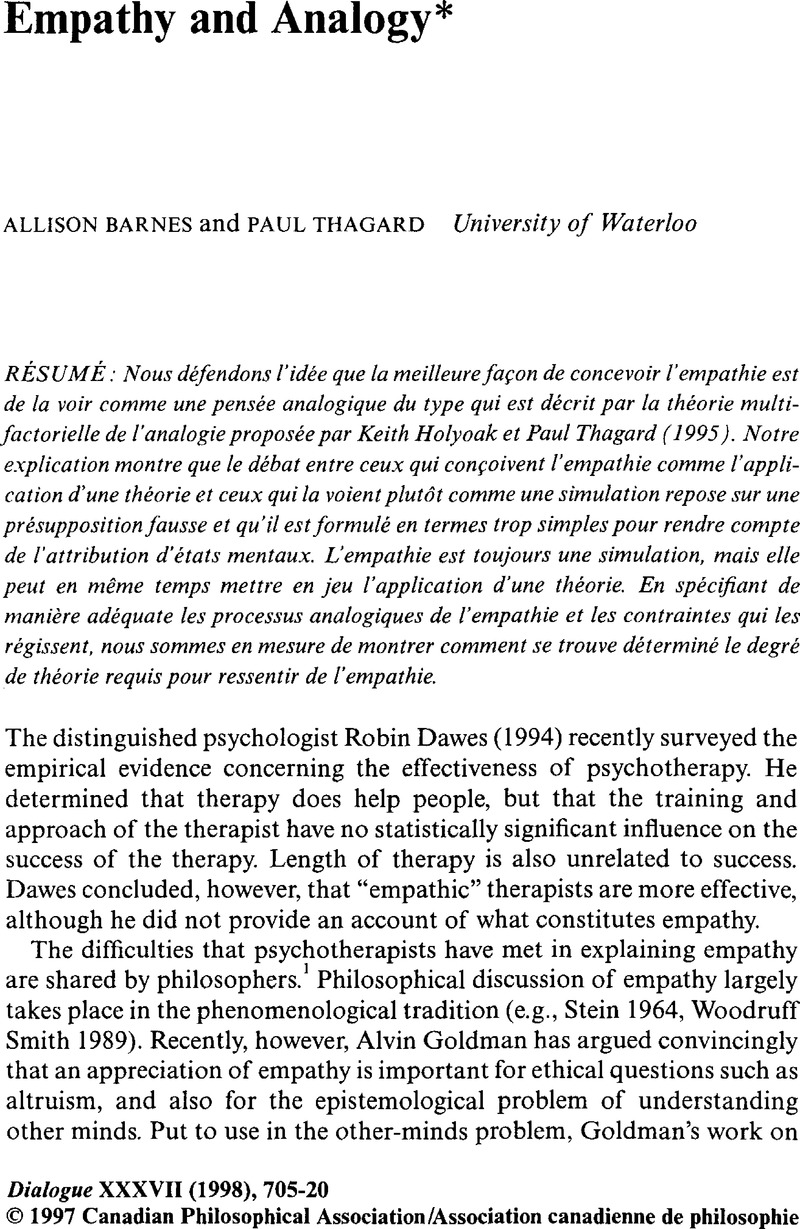Crossref Citations
This article has been cited by the following publications. This list is generated based on data provided by Crossref.
Carruthers, Peter
Stich, Stephen
and
Siegal, Michael
2002.
The Cognitive Basis of Science.
Lyddon, William J.
and
Alford, Darlys J.
2002.
Cognitive Psychotherapy Toward a New Millennium.
p.
69.
Kuiken, Don
Phillips, Leah
Gregus, Michelle
Miall, David S.
Verbitsky, Mark
and
Tonkonogy, Anna
2004.
Locating Self-Modifying Feelings Within Literary Reading.
Discourse Processes,
Vol. 38,
Issue. 2,
p.
267.
Kuiken, Don
Miall, David S.
and
Sikora, Shelley
2004.
Forms of Self-Implication in Literary Reading.
Poetics Today,
Vol. 25,
Issue. 2,
p.
171.
Smaling, Adri
2006.
Phenomenology of Life from the Animal Soul to the Human Mind.
Vol. 94,
Issue. ,
p.
309.
Thagard, Paul
and
Kroon, Fred W.
2006.
Emotional consensus in group decision making.
Mind & Society,
Vol. 5,
Issue. 1,
p.
85.
Luo, Shirong
2007.
Relation, Virtue, and Relational Virtue: Three Concepts of Caring.
Hypatia,
Vol. 22,
Issue. 3,
p.
92.
Érdi, Péter
Diwadkar, Vaibhav
and
Ujfalussy, Balázs
2008.
Artificial Neural Networks - ICANN 2008.
Vol. 5164,
Issue. ,
p.
929.
Miceli, Maria
Mancini, Alessandra
and
Menna, Palma
2009.
The art of comforting.
New Ideas in Psychology,
Vol. 27,
Issue. 3,
p.
343.
Arnold, R.
2010.
International Encyclopedia of Education.
p.
597.
Cohen, Milton
Quintner, John
Buchanan, David
Nielsen, Mandy
and
Guy, Lynette
2011.
Stigmatization of Patients with Chronic Pain: The Extinction of Empathy.
Pain Medicine,
Vol. 12,
Issue. 11,
p.
1637.
Thagard, Paul
2011.
The Brain is Wider than the Sky: Analogy, Emotion, and Allegory.
Metaphor and Symbol,
Vol. 26,
Issue. 2,
p.
131.
Agnati, Luigi F.
Barlow, Peter
Ghidoni, Roberta
Borroto-Escuela, Dasiel O.
Guidolin, Diego
and
Fuxe, Kjell
2012.
Possible genetic and epigenetic links between human inner speech, schizophrenia and altruism.
Brain Research,
Vol. 1476,
Issue. ,
p.
38.
Krawczyk, Daniel C.
2012.
The cognition and neuroscience of relational reasoning.
Brain Research,
Vol. 1428,
Issue. ,
p.
13.
2015.
The Trinity of Trauma: Ignorance, Fragility, and Control.
p.
553.
2016.
Die Trauma-Trinität: Ignoranz – Fragilität – Kontrolle.
p.
639.
Quintner, John
and
Cohen, Milton
2016.
Meanings of Pain.
p.
281.
Shelley, Cameron
2017.
Springer Handbook of Model-Based Science.
p.
1117.
Bahler, Brock
2018.
How Levinas Can (and Cannot) Help Us with Political Apology in the Context of Systemic Racism.
Religions,
Vol. 9,
Issue. 11,
p.
370.
Caliandro, Stefania
2019.
Morphodynamics in Aesthetics.
p.
61.



